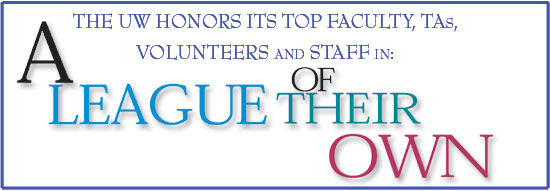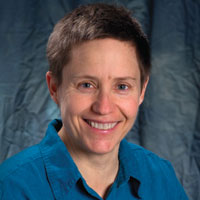

Distinguished Teaching Award
 Laura Little
Laura Little
Senior Lecturer, Department of Psychology
In every right-brained field of study there is a left-brained course that nobody wants to take-statistics. The word sends shivers down the spines of undergraduates. So when Laura Little tells people she teaches statistics, it's a conversation stopper.
But she sees statistics as more than numbers and technical recipes. Little sees the underpinnings of what psychologists do. "We try to measure things that are difficult to measure, like intelligence, arousal, inhibition," she notes. How do we know that we really understand human behavior? How do we prove theories that can be used to help people? The answer lies in statistics.
Trained as a behavioral scientist, Little is also an attorney. She practiced criminal law for seven years before deciding she was more interested in looking at the admissibility of scientific evidence and how it becomes acceptable in the science community. She went back to school and earned a doctorate in psychology with an emphasis on quantitative methodology.
There are close similarities between using evidence to prove a case in court and using statistics to prove your theories in psychology, Little says. "How do we support the claims we wish to make, and by what standards should we deem such claims persuasive?"
When given the opportunity to teach students about methodology and statistics, she knew she had found her niche. Even as a graduate teaching assistant, she began accumulating awards for teaching the courses nobody wanted to take. Today she has a reputation for making statistics come alive and for having a steady stream of students passing through her office for advice on how to cope with the mountains of data they collect in their own research projects.
Little knows that mathematics and statistics are difficult for most students, especially those more interested in content classes such as cognitive psychology, human memory and aggression. But students often aren't aware of how quantitatively driven psychological research is. She remembers herself as an undergraduate, just wanting to be a sponge and absorb everything.
"That's fine for a while, but at some point you want students to start asking questions and challenging and pushing a little bit," she says. "I'm trying to train them to be scientists, not just people who know a lot of things about behavior. It's very difficult to be a psychological scientist and not be well trained. I treat all my students as if that's what they want to be."
A graduate student describes Little this way: "Even though she knows the material very well herself, she knows where concepts become difficult for beginners, and she can tailor her explanations to this level. . She uses gray areas of statistics to spark the intellectual curiosity of the strong students without overwhelming the students who are not ready to deal with such thoughts."
With a combination of a sincere invitation and a good sell, Little means to convince students of the value of statistics. And it usually works. The same grad student writes, "Every quarter some students end up discovering that they think statistics is pretty cool."
Another writes, "In teaching a subject reputed to be colorless, tedious and technical, Dr. Little's sense of intellectual excitement and educational mission is infectious. The classroom environment in her statistics courses is bright, engaged and focused."
Statistics stretches students' abilities, Little knows. "It's good mental exercise. They may be sore, but they'll feel like they've achieved something."-Beth Luce